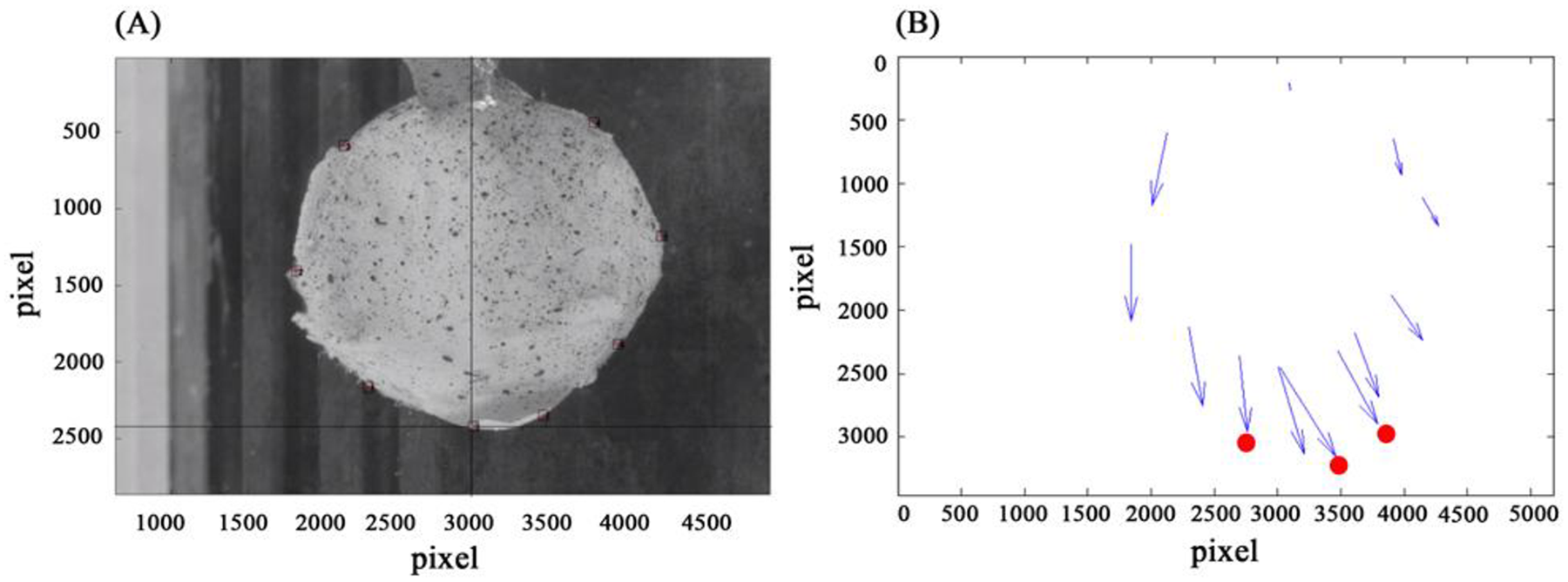Strengthening Cornea: How Cross-Linking Works
Authors: Chang, S.H., Zhou, D., Eliasy, A., Li, Y.C., and Elsheikh, A.
Journal: Plos One
Publication Date: Nov 2020
A demonstration of Particle Image Velocimetry (PIV). (A) screen capture of the manual tagging of desired points. (B) result of deformed tagged points (corneal apex and limbus).
Summary:
Our eyes are incredibly complex organs, and their health is essential for our quality of life. keratoconus, a progressive eye condition, affects the cornea's shape and can lead to vision problems. To manage this condition, a procedure called corneal cross-linking (CXL) has become the first-line treatment. Our research team investigated how CXL affects the stiffness of the cornea, a key factor in eye health, and how we can better understand its impact.
In our study, we used porcine eye globes (pig eyes) to examine the cornea's behaviour after CXL treatment. We developed an experimental inflation test and used a computational method called finite element modelling to analyse the results. By comparing treated and untreated corneas, we found that CXL significantly increased the cornea's stiffness, which can help stabilise its structure and improve vision for those with keratoconus.
Our findings support the idea that the corneal material properties can be well-described using our inflation methods following CXL. The inflation test we developed is valuable for investigating the mechanical response of the intact human cornea within physiological pressure ranges, which can help guide future research and clinical applications of CXL treatment.
This research contributes to a better understanding of how CXL works to improve corneal health and provides valuable insights for clinicians seeking to estimate the severity of keratoconus and predict refractive outcomes. By refining our knowledge of CXL's biomechanical effects, we can help improve the lives of those living with keratoconus and other corneal conditions.

